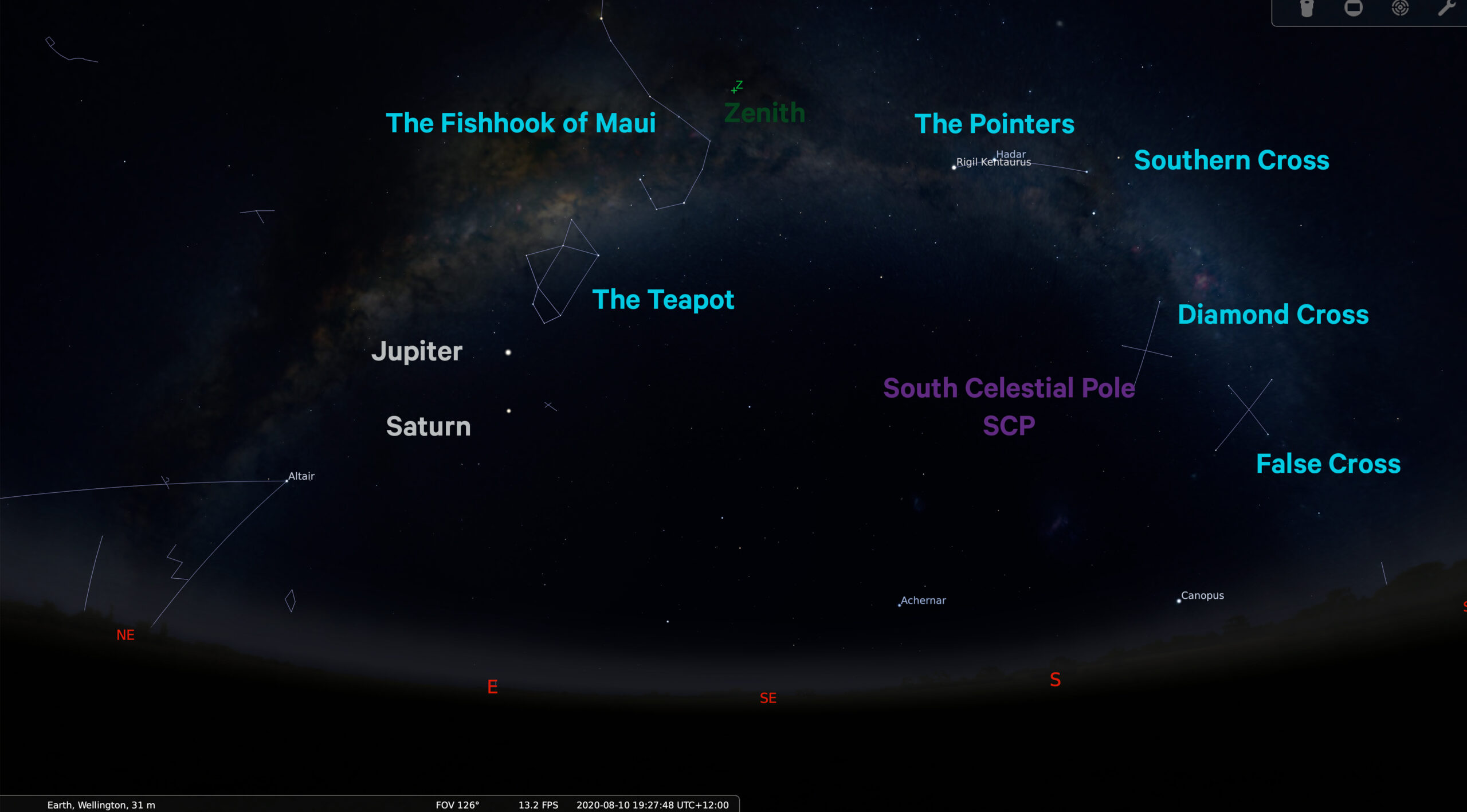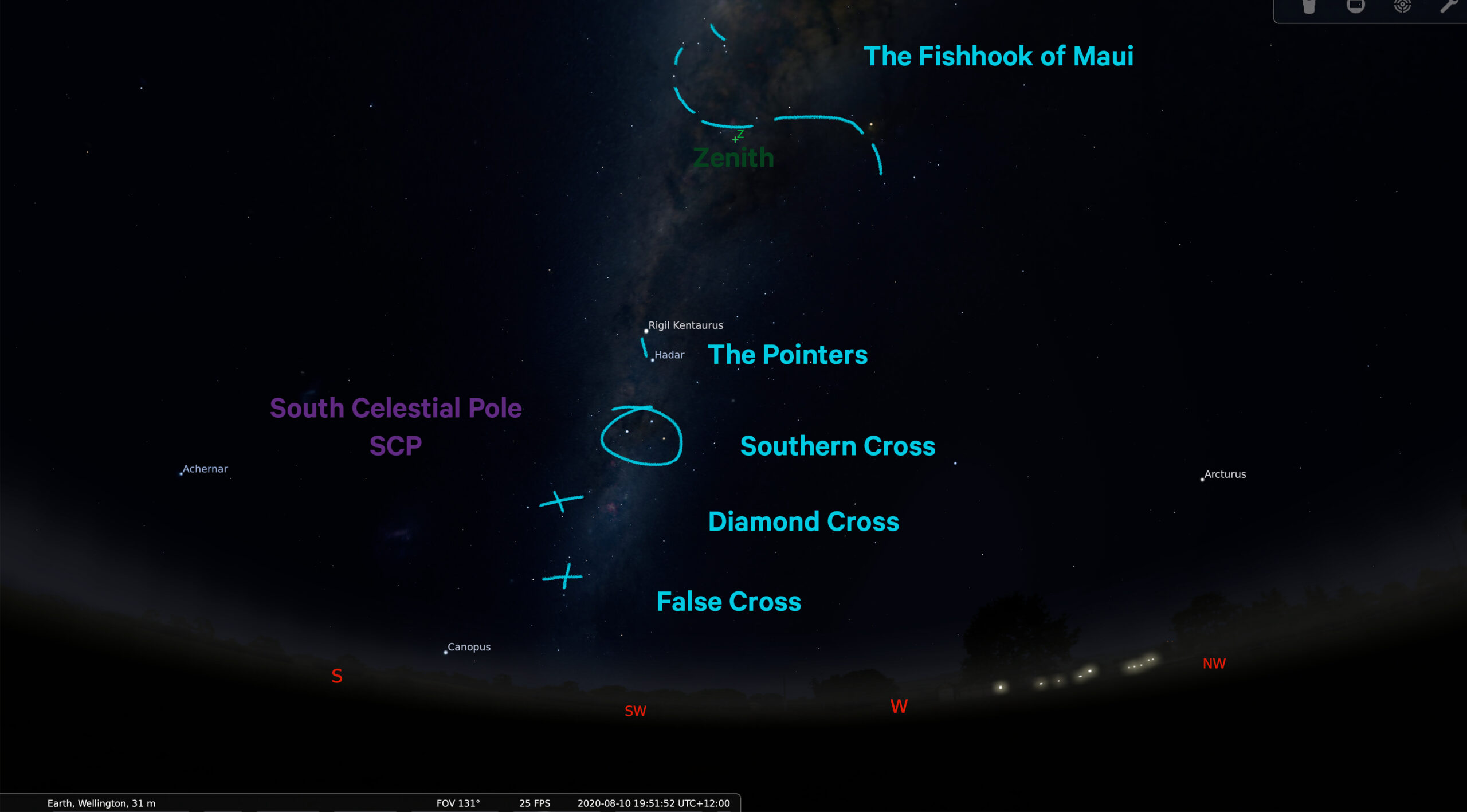Look after our night sky
How to find Scorpius
For Aotearoa, Scorpius is Te Matau a Māui, the fishhook that Māui used to fish the North Island from the sea. This is an allegory to the fact that when travelling on the ocean, the land looks like it’s being pulled from behind the horizon by an invisible force. In reality, it is the curvature of the Earth that makes it look so.
Māori have a few names for Scorpius: Manaia ki te Rangi in April, May and June, Te Matau a Māui in July, August and September and the prow of the waka of Tamarereti in October and November. The constellation disappears behind the blaze of the Sun at the beginning of December and reappears on the morning sky at the end of the month. There is a direct relationship between the Southern Cross and Scorpius. When the Southern Cross approaches its highest position in the sky, Scorpius will rise in the east and when the Southern Cross is almost at its lowest position in the sky, Scorpius is setting in the west.
In June, July and August, you will find Scorpius climbing the sky from the east to just north of overhead (zenith).
While the Pacific navigation tradition assigns a zenith star for each of the Pacific islands, we can say that here in Aotearoa, our zenith stars are the ones that make up te Matau (fish hook) of Māui – in the constellation Scorpius.

